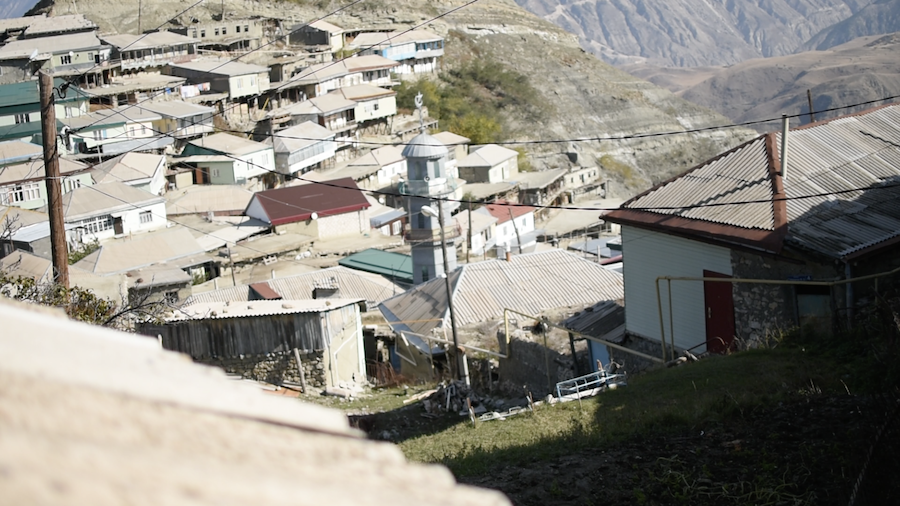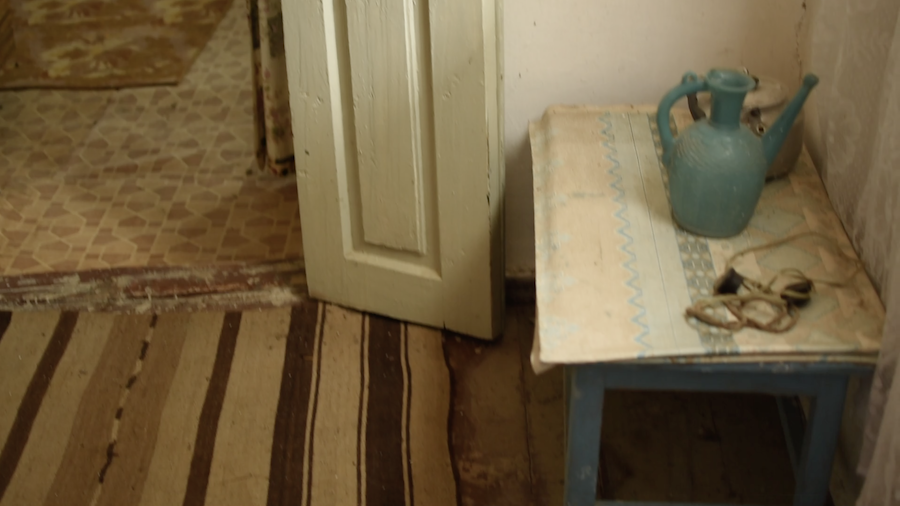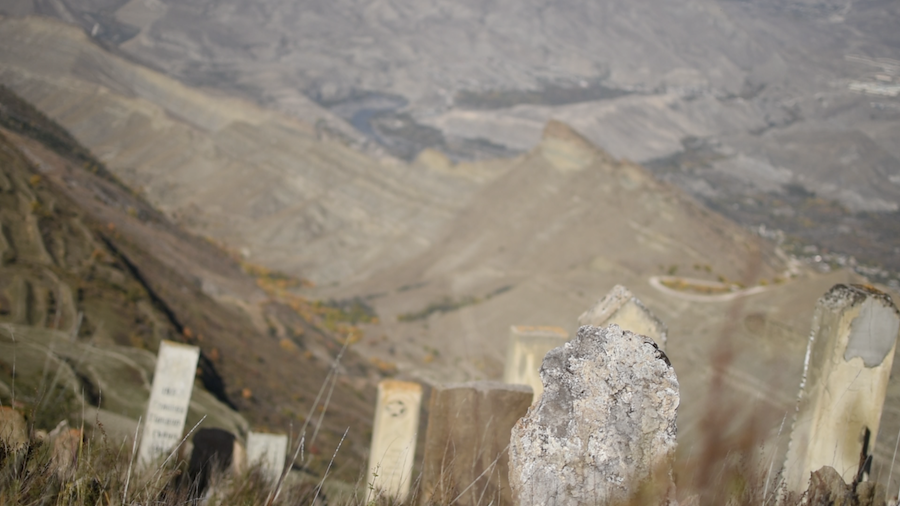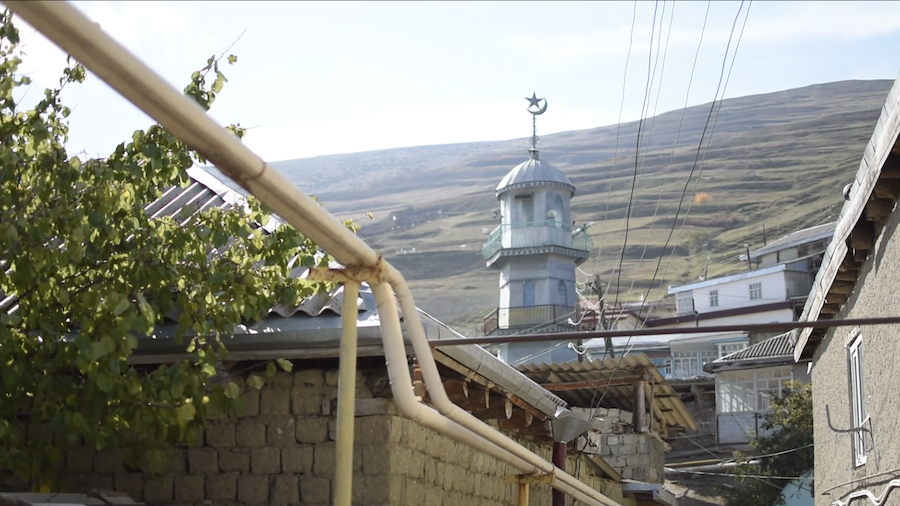During her many visits to her family village in Dagestan, the artist Mariyat Abdulhamidova worked with her grandmother to record a miniature album in the Avar language.
My grandmother's name is Nagizat. This is a very rare name, even for Dagestan. My second grandmother, by the way, is called Umu Kusum. She also sings and I hope that I will have time to record her, although it is more difficult to see her. My whole family comes from Kheleturi, a small Avar village in the Botlikh region. When my grandmother got married, she moved closer to Kizlyar, to Novokheleturi, but after my grandfather died, she sold the house there and moved permanently to Botlikh.
I always spent my summers in Dagestan. While at first I came to help out, dry apricots, and enjoy myself, the last 3–4 years I have returned with some specific tasks.
Screenshots from a video by Mariat Abdulkhamidova
This album was part of a project that existed in my imagination, the essence of which I no longer remember well, but I think it was an exhibition. I recorded some things myself, for example, a video with my grandmother, back in 2019. She started singing, and as I was nearby, I started filming and recording. Everything happened naturally—this is important for me, although my grandmother always reacts in a very touching way to the camera: she begins to sing even better and then asks me when I will send her the photos. It’s funny because she has a push-button Nokia mobile that can’t even receive them. My aunt sent me some of the recordings via messenger, and you can hear my grandmother and her laughing and chatting in the background. The result is a short but valuable album comprised of Avar language tongue twisters, short stories, and songs.
1. “I Can’t Sleep”—this is a request to God. Nagizat sings in Avar, but begins and ends with a sura from the Koran.
2. “чIегIергъеду”—a conversation with a black crow. It is structured in the form of “question-answer-question-answer.” After each sentence, the word “гъеду” is pronounced, which makes the song more rhythmic:
Where, where, crow?
Into the forest, crow.
Why go to the forest, crow?
To collect the rods, crow.
Why rods, crow?
To build a house, crow.
Why a house, crow?
To marry, crow.
Why marry, crow?
To have children, crow.
Why children, crow?
To sit by the window and do nothing.
3. “The Crow and the Fox”—a classic story about a crow, a fox, and cheese. Here the cheese comes after the fox, asks the crow what day of the week it is, and she answers arbagI (Wednesday).
4. “Fox”—a tongue twister where the running fox is mentioned only at the very beginning. Each next sentence moves you away from the previous one. The structure resembles the search for Koshchei the Immortal's needleKoshchei the Immortal's needleKoshchei is an archetypal male antagonist in Russian folklore; the most common feature of tales involving Koschei is a spell which prevents him from being killed. He hides his soul inside nested objects to protect it: "his death is at the end of a needle, the needle is in an egg, the egg is in a duck, the duck is in a hare, the hare is hidden in a chest, the chest hangs in chains on an oak tree that grows on a black mountain or on the distant island of Buyan.".
5. “About Lenin”—a song about Lenin, who is "still more alive than all those living," but is in fact more about the monuments to Lenin that stand in every city.
6. “Winter”—the last song in the album. It's about cranes flying away for the winter. It is likely that it could have been longer, but at the very end of the recording my grandmother says, “I don’t know anymore.” and the recording stops.















